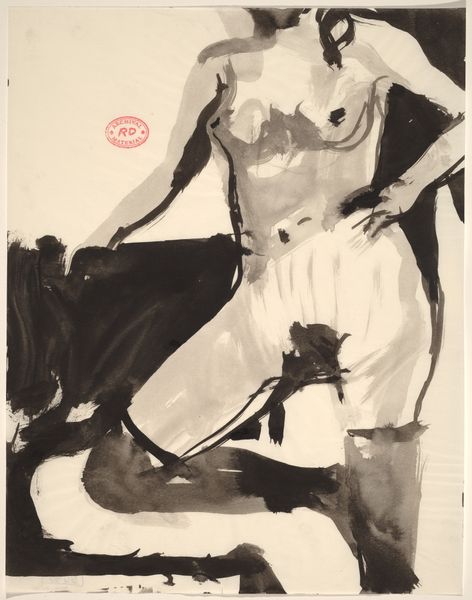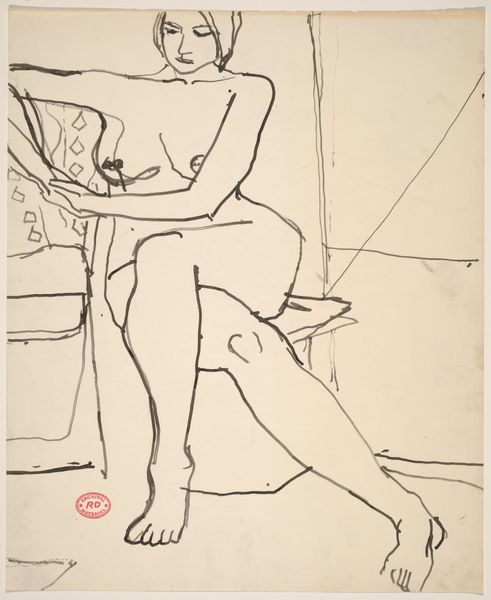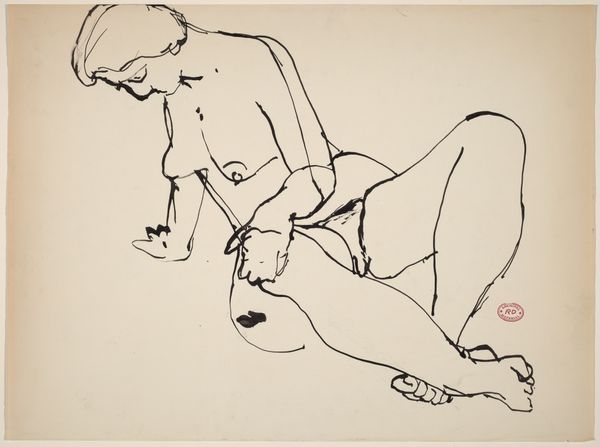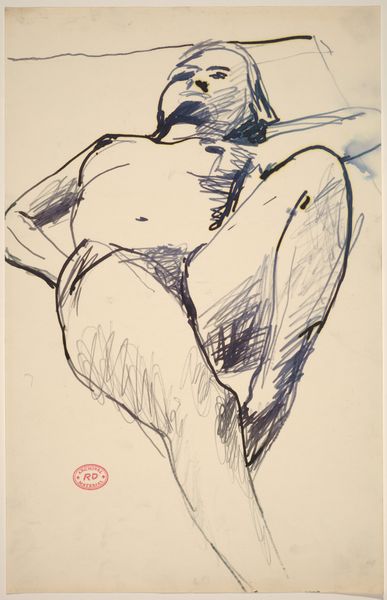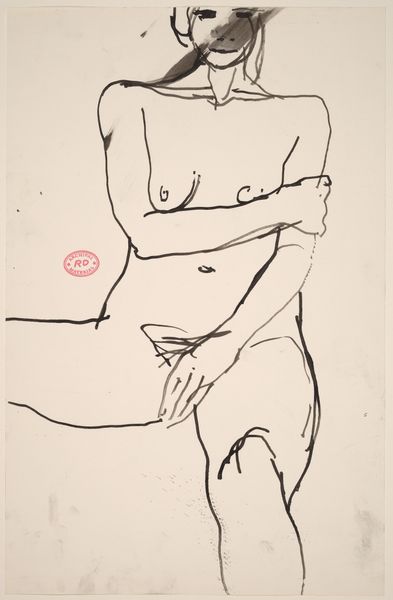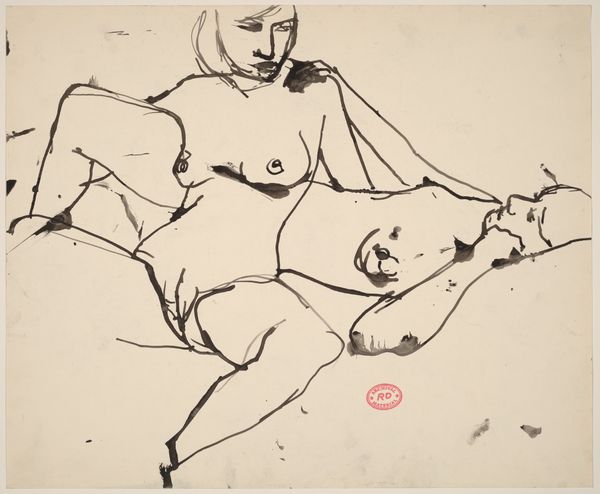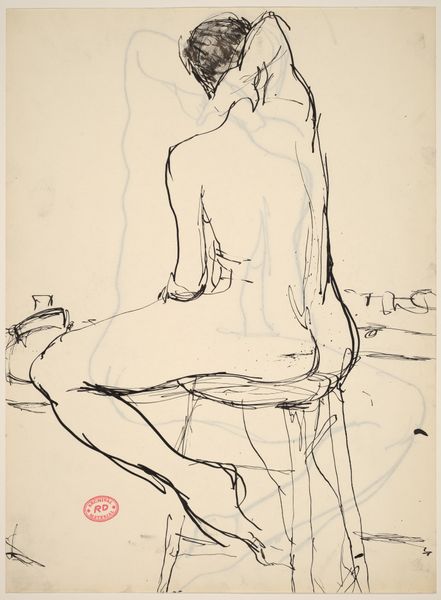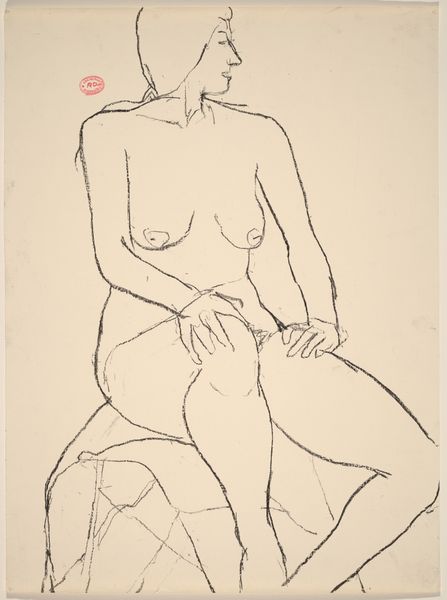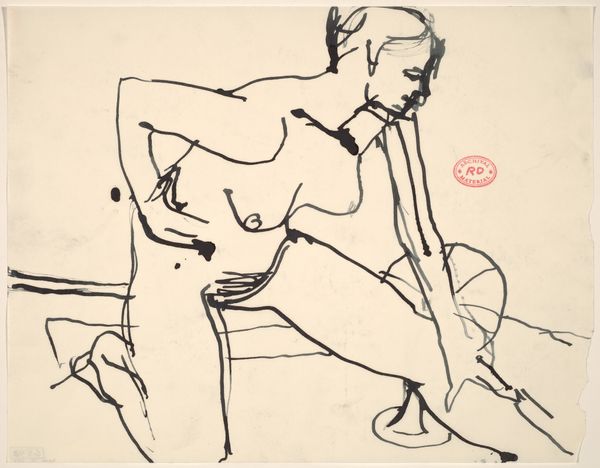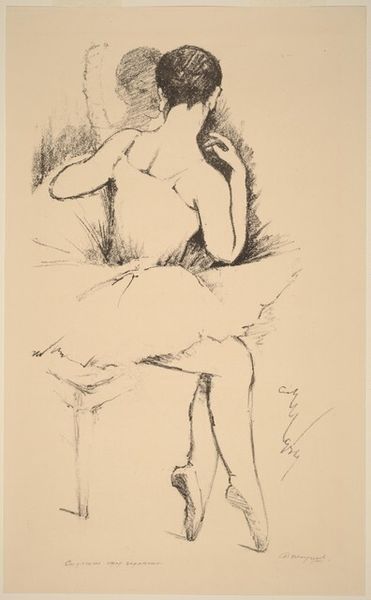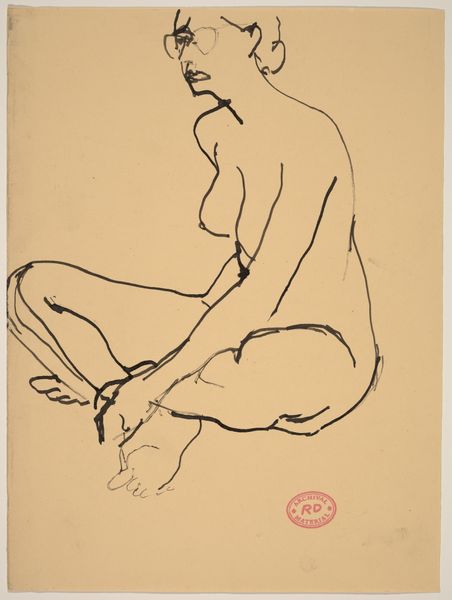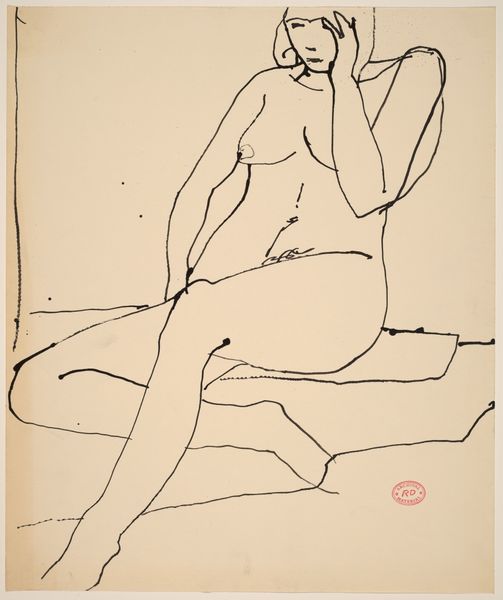
painting, acrylic-paint
#
portrait
#
painting
#
acrylic-paint
#
figuration
#
acrylic on canvas
#
genre-painting
#
realism
Copyright: Modern Artists: Artvee
Curator: Edward Runci's 1952 work, "He Loves Me, He Loves Me Not," is an acrylic on canvas painting rendered in the realism style. Editor: Immediately, the intense, almost saccharine cheerfulness strikes me. The bright blue background contrasts with the idealized beauty of the woman, surrounded by a halo of daisies. Curator: The title alludes to the famous flower-plucking game, a theme resonant with post-war femininity and romantic anxieties. We could even view it as speaking to the societal pressures placed on women regarding marriage and their perceived value contingent on male approval. Editor: Indeed. Runci’s application of acrylic achieves a hyper-real texture, amplifying the almost sculptural quality of the woman’s form and the way light bounces across the composition. There's an interesting dynamic between flatness of the solid sky and the rich impasto details in the daisies. Curator: Exactly, consider how the composition deliberately presents a popularized ideal of feminine beauty from that era—a construction reflecting certain gendered power dynamics. It speaks to a broader narrative of identity that demands unpacking through feminist theory. The woman, adorned in pastels and set against an artificial idyllic setting, epitomizes constructed innocence. Editor: The clarity of line and boldness of form speak to commercial art trends as well, like those often found in pin-up art. Runci's skillful deployment of line really contains the scene. You have crispness and legibility even in complex forms. Curator: Yes, Runci presents us with a potent example of how artworks are products of cultural forces that deserve scrutiny and conversation within our contemporary framework. Editor: What is striking is the formal mastery used to convey that cultural weight; it has a lasting impression due to the command of color and composition. Curator: I’m left pondering the weight of constructed identities that resonate to this day, the complexities of desire and autonomy and how this particular construction lives on within a modern intersectional narrative. Editor: For me, I'm left considering how this canvas stands as a lasting record of light and form, where those painterly qualities speak with authority in any era.
Comments
No comments
Be the first to comment and join the conversation on the ultimate creative platform.
